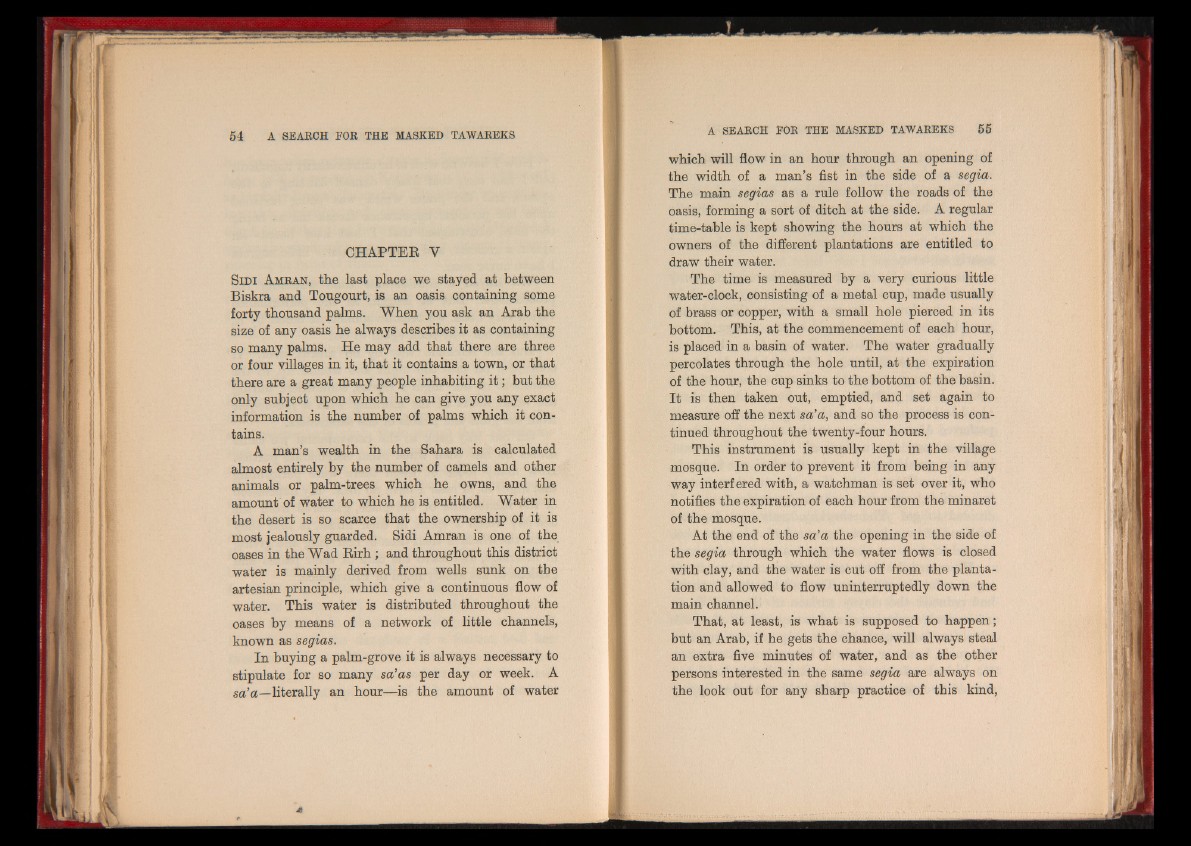
CHAPTER Y
S idi A mran, the last place we stayed at between
Biskra and Tougourt, is an oasis containing some
forty thousand palms. When you ask an Arab the
size of any oasis he always describes it as containing
so many palms. He may add that there are three
or four villages in it, that it contains a town, or that
there are a great many people inhabiting i t ; but the
only subject upon which he can give you any exact
information is the number of palms which it contains
. A man’s wealth in the Sahara is calculated
almost entirely by the number of camels and other
fl.nima.1a or palm-trees which he owns, and the
amount of water to which he is entitled. Water in
the desert is so scarce that the ownership of it is
most jealously guarded. Sidi Amran is one of the
oases in the Wad Rirh ; and throughout this district
water is mainly derived from wells sunk on the
artesian principle, which give a continuous flow of
water. This water is distributed throughout the
oases by means of a network of little channels,
known as segias.
In buying a palm-grove it is always necessary to
stipulate for so many sa’as per day or week. A
sa’a—literally an hour—is the amount of water
A SEARCH FOR THE MASKED TAWAREKS 55
which will flow in an hour through an opening of
the width of a man’s fist in the side of a segia.
The main segias as a rule follow the roads of the
oasis, forming a sort of ditch at the side. A regular
time-table is kept showing the hours at which the
owners of the different plantations are entitled to
draw their water.
The time is measured by a very curious little
water-clock, consisting of a metal cup, made usually
of brass or copper, with a small hole pierced in its
bottom. This, at the commencement of each hour,
is placed in a basin of water. The water gradually
percolates through the hole until, at the expiration
of the hour, the cup sinks to the bottom of the basin.
It is then taken out, emptied, and set again to
measure off the next sa’a, and so the process is continued
throughout the twenty-four hours.
This instrument is usually kept in the village
mosque. In order to prevent it from being in any
way interfered with, a watchman is set over it, who
notifies the expiration of each hour from the minaret
of the mosque.
At the end of the sa’a the opening in the side of
the segia through which the water flows is closed
with clay, and the water is cut off from the plantation
and allowed to flow uninterruptedly down the
main channel.
That, at least, is what is supposed to happen;
but an Arab, if he gets the chance, will always steal
an extra five minutes of water, and as the other
persons interested in the same segia are always on
the look out for any sharp practice of this kind,